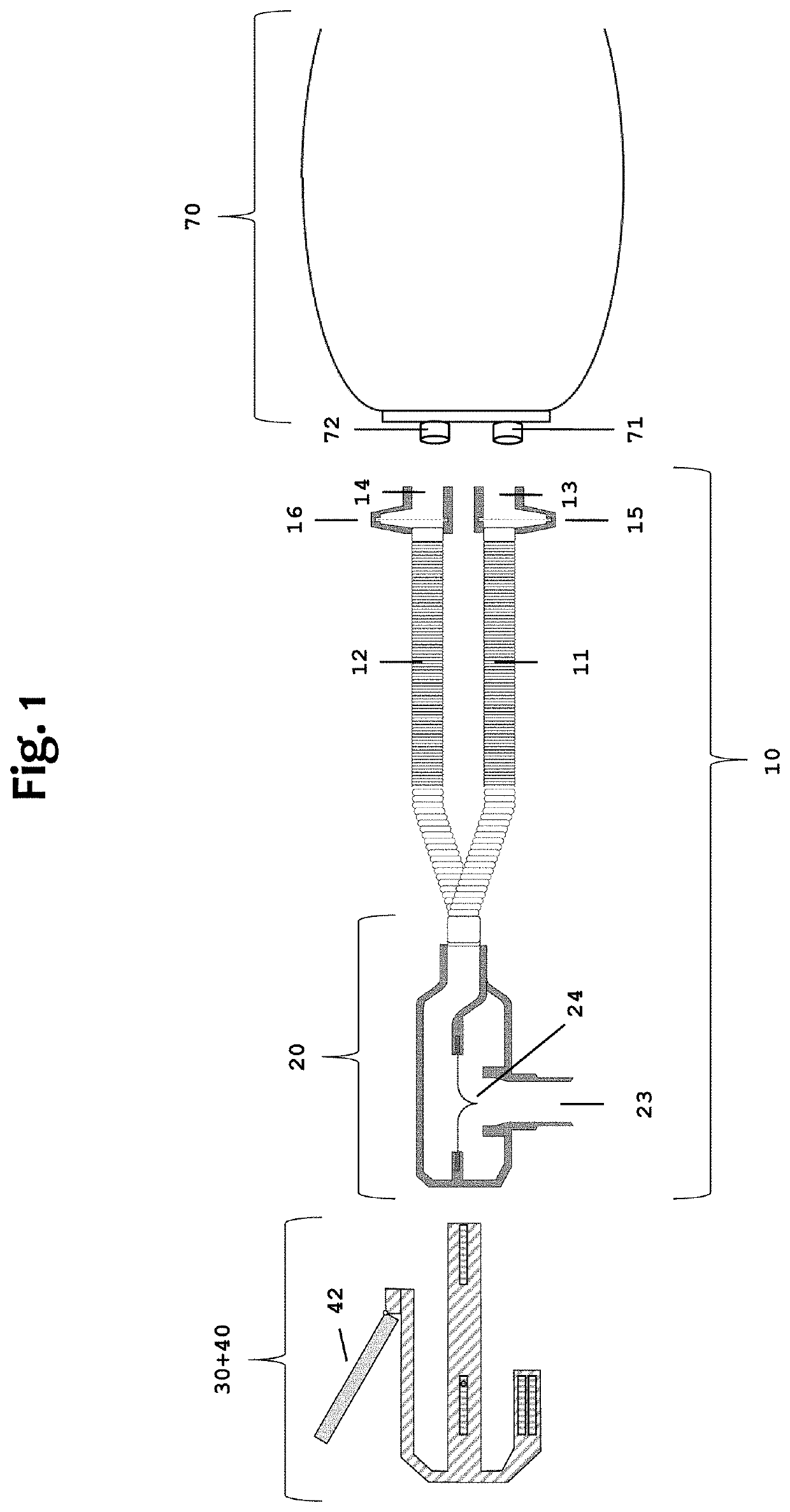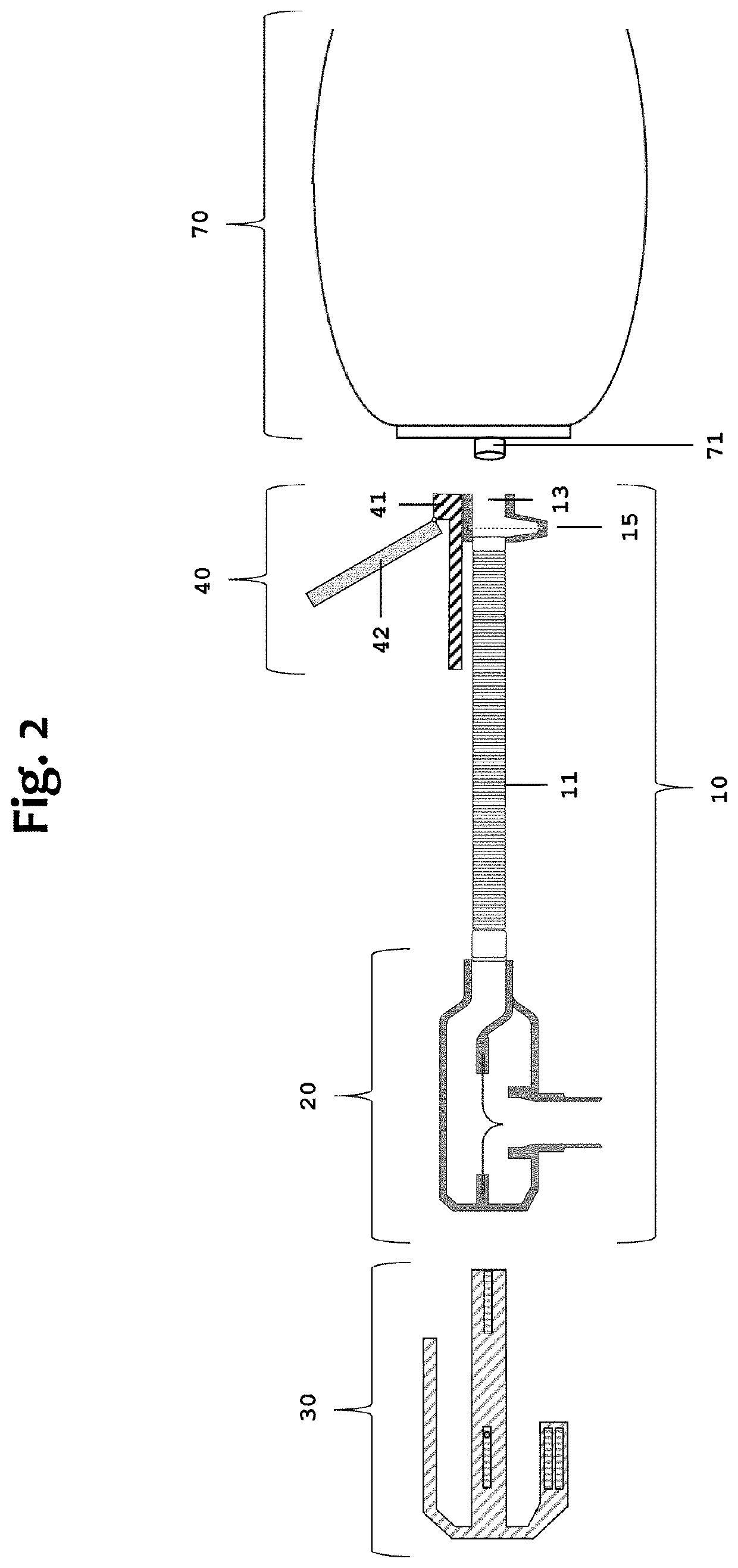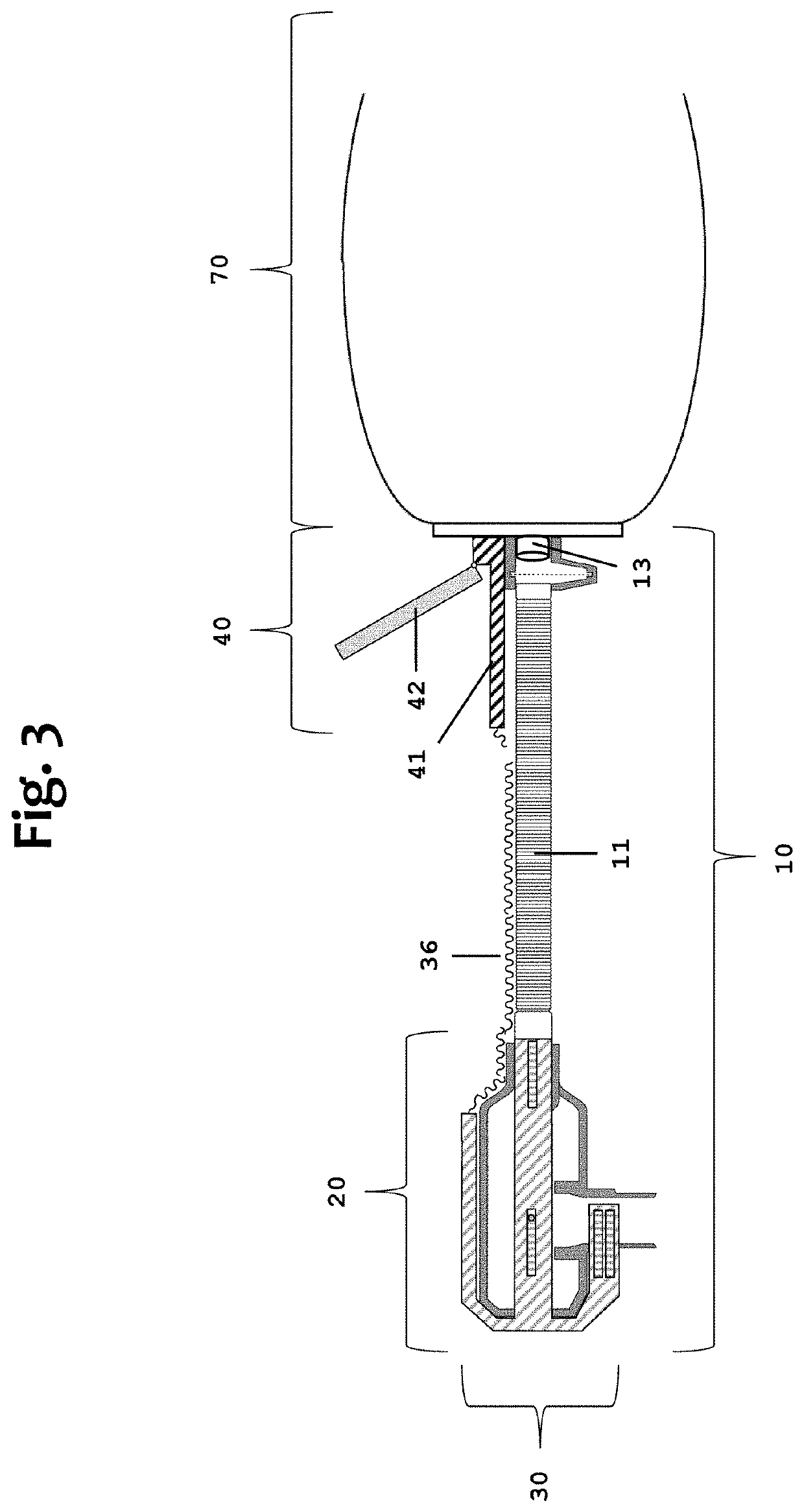Data-integrated artificial ventilation system
a data-integrated, artificial ventilation technology, applied in the field of protecting patients from harmful effects of artificial ventilation, to achieve the effect of reducing (or even eliminating) certain risks, reducing the risk of vili, and protecting patients
- Summary
- Abstract
- Description
- Claims
- Application Information
AI Technical Summary
Benefits of technology
Problems solved by technology
Method used
Image
Examples
Embodiment Construction
[0070]FIG. 1 illustrates a combination comprising a convertible ventilator circuit 10 having an inspiratory limb 11, with said inspiratory limb having an inspiratory particle, poison and pathogen filter 15 and ventilator inspiratory connection 13. The convertible ventilator circuit 10 also comprises an expiratory limb 12 having an expiratory pathogen filter 16 and ventilator expiratory connection 14. The convertible ventilator circuit 10 also comprises a patient manifold 20 that has fluid connections with the inspiratory limb 11 and expiratory limb 12, and also has an airway adjunct receptacle 23 that provides a fluid connection to an airway adjunct that interfaces with the patient. A preferred embodiment for an inspiratory limb non-return valve 24 is positioned to alternate fluid connectivity between either: (1) the inspiratory limb 11 and airway adjunct receptacle 23; or (2) the expiratory limb 12 and airway adjunct receptacle 23. This configuration for an inspiratory limb non-ret...
PUM
 Login to View More
Login to View More Abstract
Description
Claims
Application Information
 Login to View More
Login to View More - R&D
- Intellectual Property
- Life Sciences
- Materials
- Tech Scout
- Unparalleled Data Quality
- Higher Quality Content
- 60% Fewer Hallucinations
Browse by: Latest US Patents, China's latest patents, Technical Efficacy Thesaurus, Application Domain, Technology Topic, Popular Technical Reports.
© 2025 PatSnap. All rights reserved.Legal|Privacy policy|Modern Slavery Act Transparency Statement|Sitemap|About US| Contact US: help@patsnap.com



